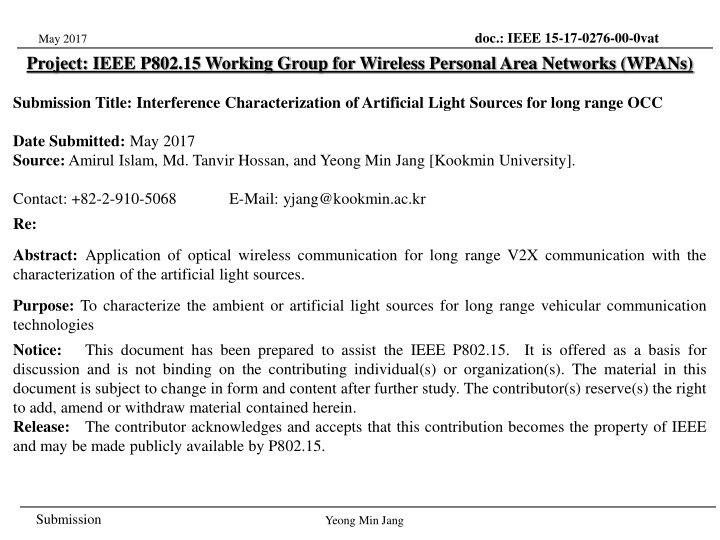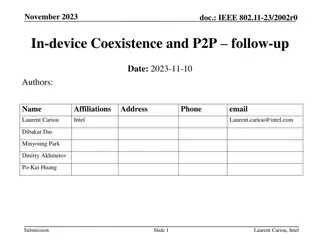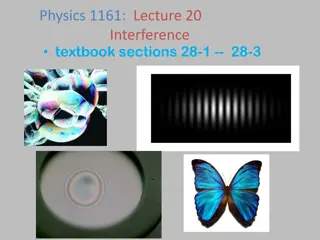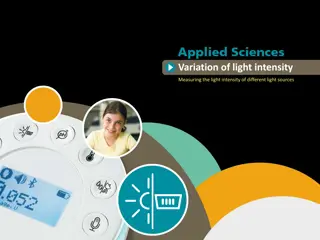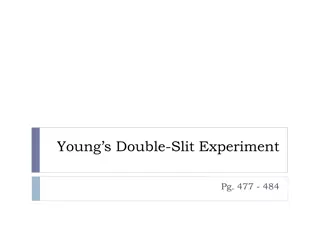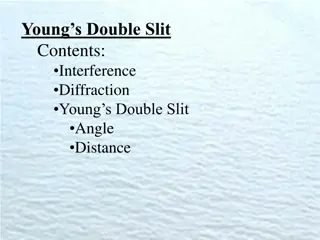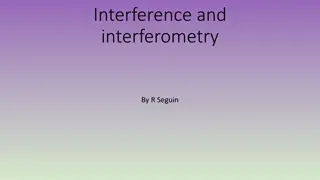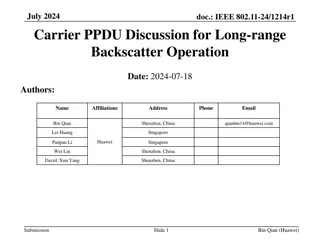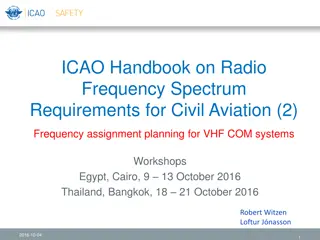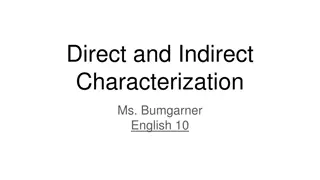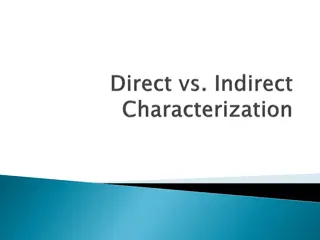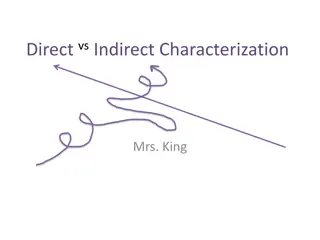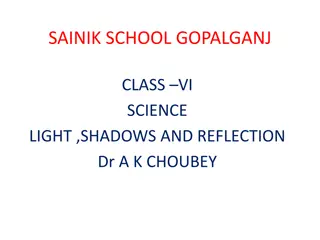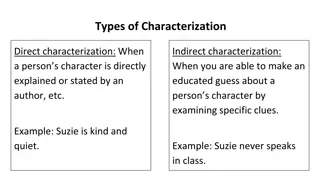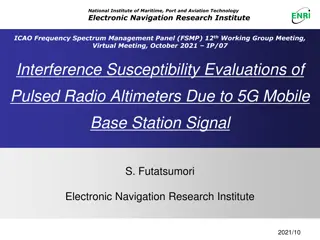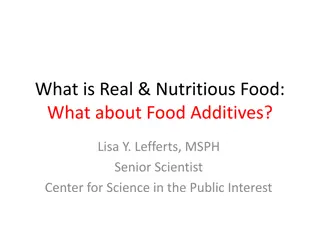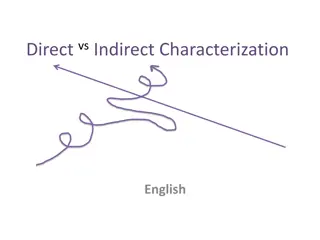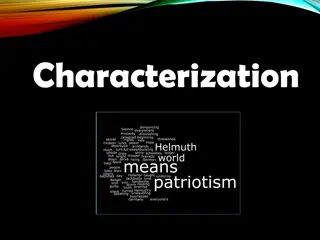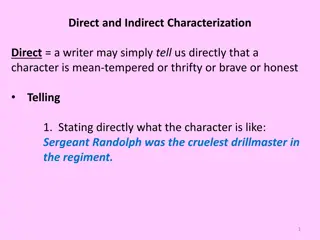Interference Characterization of Artificial Light Sources for Long Range Vehicular Communication
This document explores the application of optical wireless communication for long-range vehicle-to-anything (V2X) communication through the characterization of artificial light sources. It delves into the challenges and potentials of using optical wireless communications, such as Near IR technology, for transmitting data between automotive LED lights and cameras, enabling advanced driver assistance systems and intelligent transportation systems to address various transportation issues. The study aims to pave the way for cooperative mobility and safer, more efficient vehicular environments.
Download Presentation

Please find below an Image/Link to download the presentation.
The content on the website is provided AS IS for your information and personal use only. It may not be sold, licensed, or shared on other websites without obtaining consent from the author.If you encounter any issues during the download, it is possible that the publisher has removed the file from their server.
You are allowed to download the files provided on this website for personal or commercial use, subject to the condition that they are used lawfully. All files are the property of their respective owners.
The content on the website is provided AS IS for your information and personal use only. It may not be sold, licensed, or shared on other websites without obtaining consent from the author.
E N D
Presentation Transcript
doc.: IEEE 15-17-0276-00-0vat May 2017 Project: IEEE P802.15 Working Group for Wireless Personal Area Networks (WPANs) Submission Title:Interference Characterization of Artificial Light Sources for long range OCC Date Submitted: May 2017 Source: Amirul Islam, Md. Tanvir Hossan, and Yeong Min Jang [Kookmin University]. Contact: +82-2-910-5068 Re: E-Mail: yjang@kookmin.ac.kr Abstract: Application of optical wireless communication for long range V2X communication with the characterization of the artificial light sources. Purpose: To characterize the ambient or artificial light sources for long range vehicular communication technologies Notice: This document has been prepared to assist the IEEE P802.15. It is offered as a basis for discussion and is not binding on the contributing individual(s) or organization(s). The material in this document is subject to change in form and content after further study. The contributor(s) reserve(s) the right to add, amend or withdraw material contained herein. Release: The contributor acknowledges and accepts that this contribution becomes the property of IEEE and may be made publicly available by P802.15. Submission Yeong Min Jang
doc.: IEEE 15-17-0276-00-0vat Interference Characterization of Artificial Light Sources for long range OCC
doc.: IEEE 15-17-0276-00-0vat May 2017 Introduction Expanding the ecosystem by bringing the components together from ITS, IoT, edge & cloud computing, big data and connected vehicles for cooperative ITS management.) Camera, lasers (LIDAR), GPS for safety and innovations in advanced driver assistance systems with a connection to the cloud platform. Mobile (smart) device integration in vehicle and transport systems can pave way for collecting the data about the vehicular environment. and cooperative mobility Yeong Min Jang Slide 3 Submission
doc.: IEEE 15-17-0276-00-0vat May 2017 Introduction (2) Uniform mechanism for data fusion and analytics and integrating all heterogeneous elements into a standard IoT architecture for connected vehicles. Challenges to enable an intelligent transportation system to address issues facing the transportation such as high fuel prices, high levels of CO2 emissions, increasing traffic congestion, and improved road safety, avoid accident/collision. We may use vehicular OWC (Optical Wireless Communications) including Near IR technology for transmitting data between front or rear automotive LED light and camera such as black-box and vision camera. Yeong Min Jang Slide 4 Submission
doc.: IEEE 15-17-0276-00-0vat May 2017 Current and future impact of emerging technologies on ITS (b) Impact of emerging technologies on ITS (a) Future trends of intelligent transportation systems Yeong Min Jang Slide 5 Submission
doc.: IEEE 15-17-0276-00-0vat May 2017 Long range OCC Long range V2X communication (>100m) precise localization to avoid accident in critical condition (1cm l evel) Mobility support (e.g., >60km/h) and multiple objects detection capability Short processing time to support communication services Affordable price to reach all customers real time and Yeong Min Jang Slide 6 Submission
doc.: IEEE 15-17-0276-00-0vat May 2017 Interference Characterization of Artificial Light Sources Artificial light sources such as; street lights, traffic lights, and adver tising boards lighting purposes (e.g., decoration lights, street lights, supportive lig ht for advertising billboards) light sources for static advertising purposes generally neon sign boa rd (i.e., neon light) advertising and signaling, such as e.g. LED screens, are usually dri ven by sophisticated controlling circuits to display various informati on on the screen. Yeong Min Jang Slide 7 Submission
doc.: IEEE 15-17-0276-00-0vat May 2017 Providing different device connectivity and new services Yeong Min Jang Slide 8 Submission
doc.: IEEE 15-17-0276-00-0vat May 2017 Benefits of the long range OCC technology Cost-effective, fixed-beam optical detection with no moving parts Narrow to wide field-of-view Multi-segment configurations for precise multi-object detection /localization /classification Short- to long-range capability Reliable operation in all lighting and environmental conditions Secure communication Can be implemented in existing infrastructures without changing them too much Yeong Min Jang Slide 9 Submission
doc.: IEEE 15-17-0276-00-0vat May 2017 Motion to 802.15 Task Group Recommendations Yeong Min Jang Slide 10 Submission
